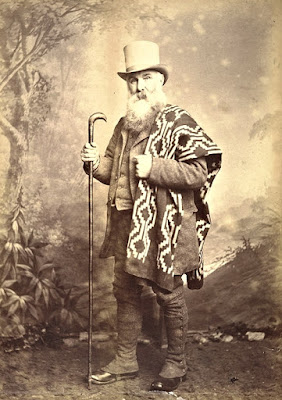Beaker culture
The Bell Beaker culture was partly preceded by and contemporaneous with the Corded Ware culture, and in north-central Europe preceded by the Funnelbeaker culture. Named after the inverted-bell beaker drinking vessel used at the very beginning of the European Bronze Age. Arising from around 2800 BC, it lasted in Britain until as late as 1800 BC. This period marks a period of cultural contact in Atlantic and Western Europe following a prolonged period of relative isolation during the Neolithic.
In its mature phase, the Bell Beaker culture is understood as not only a collection of characteristic artefact types, but a complex cultural phenomenon involving metalwork in copper and gold, archery, specific types of ornamentation, and (presumably) shared ideological, cultural and religious ideas. A wide range of regional diversity persists within the widespread late Beaker culture, particularly in local burial styles (including incidences of cremation rather than burial), housing styles, economic profile, and local ceramic wares Investigations in the Mediterranean and France recently moved the discussion to re-emphasise the importance of migration to the Bell Beaker story. Instead of being pictured as a fashion or a simple diffusion of objects and their use, the investigation of over 300 sites showed that human groups actually moved in a process that involved explorations, contacts, settlement, diffusion, and acculturation/assimilation. Some elements show the influence from the north and east, and other elements reveal the south-east of France to be an important crossroad on an important route of communication and exchange spreading north. A distinctive 'barbed wire' pottery decoration is thought to have migrated through central Italy first. The pattern of movements was diverse and complicated, along the Atlantic coast and the northern Mediterranean coast, and sometimes also far inland. The prominent central role of Portugal in the region and the quality of the pottery all across Europe are forwarded as arguments for a new interpretation that denies an ideological dimension
Another expansion brought Bell Beaker to Csepel Island in Hungary by about 2500 BC. In the Carpathian Basin, the Bell Beaker culture came in contact with communities such as the Vučedol culture (c.3000-2200 BC), which had evolved partly from the Yamnaya culture (c.3300–2600 BC).[note 1] In contrast to the early Bell Beaker preference for the dagger and bow, the favourite weapon in the Carpathian Basin during the first half of the third millennium was the shaft-hole axe.[15] Here, Bell Beaker people assimilated local pottery forms such as the polypod cup. These "common ware" types of pottery then spread in association with the classic bell beaker.[16]
From the Carpathian Basin, Bell Beaker spread down the Rhine and eastwards into what is now Germany and Poland. By this time, the Rhine was on the western edge of the vast Corded Ware zone (c.3100-2350 BC), forming a contact zone with the Bell Beaker culture. From there, the Bell Beaker culture spread further into Eastern Europe, replacing the Corded Ware culture up to the Vistula (Poland).[17][note 2]
A review in 2014 revealed that single burial, communal burial, and reuse of Neolithic burial sites are found throughout the Bell Beaker zone.[18] This overturns a previous conviction that single burial was unknown in the early or southern Bell Beaker zone, and so must have been adopted from Corded Ware in the contact zone of the Lower Rhine, and transmitted westwards along the exchange networks from the Rhine to the Loire,[19][20] and northwards across the English Channel to Britain.[4][21]
The earliest copper production in Ireland, identified at Ross Island in the period 2400–2200 BC, was associated with early Beaker pottery.[4][22] Here, the local sulpharsenide ores were smelted to produce the first copper axes used in Britain and Ireland.[4] The same technologies were used in the Tagus region and in the west and south of France.[4][23] The evidence is sufficient to support the suggestion that the initial spread of Maritime Bell Beakers along the Atlantic and into the Mediterranean, using sea routes that had long been in operation, was directly associated with the quest for copper and other rare raw materials.



Comments
Post a Comment